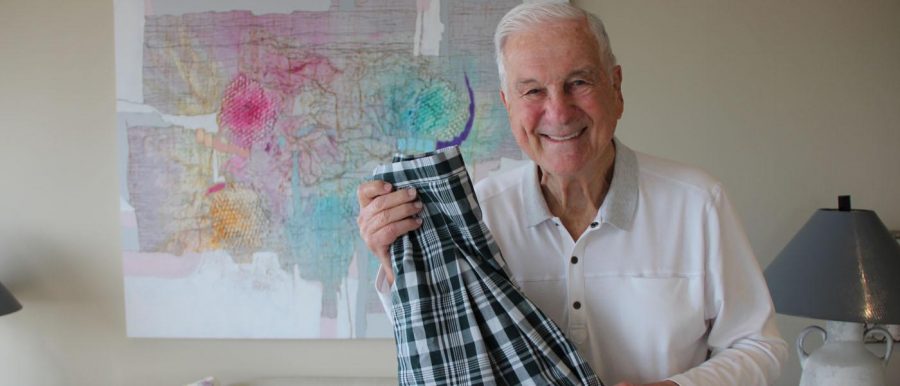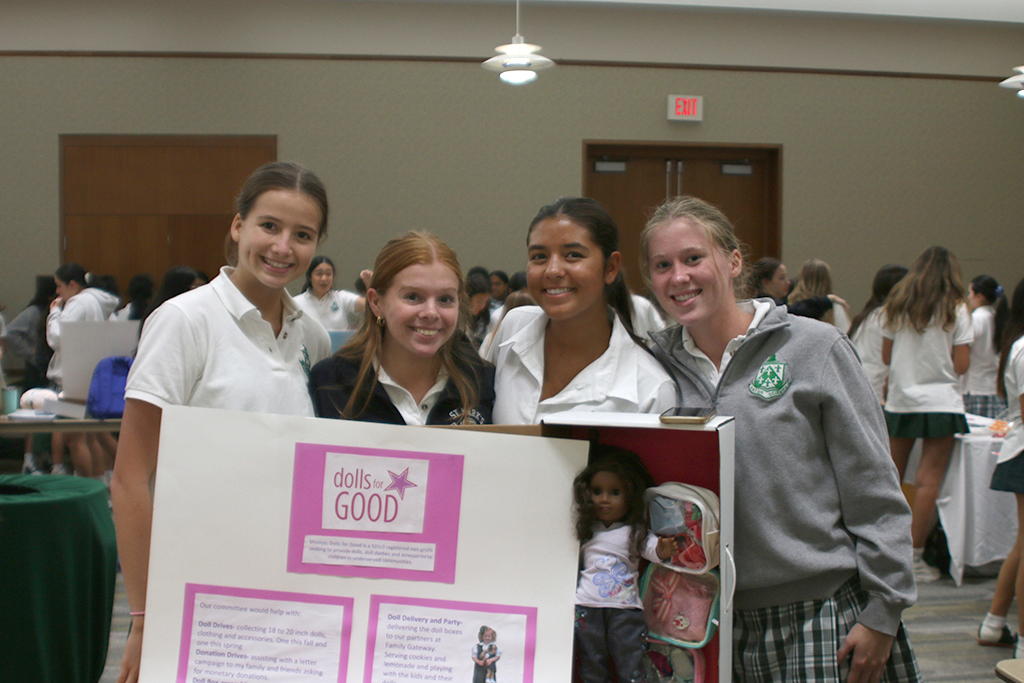When visitors walk through the Hockaday hallways, they notice one thing besides the memes stuck to the walls: the iconic Hockaday plaid. Designed 62 years after Hockaday’s establishment, the plaid was introduced in 1973 by Lester Melnick, designer, entrepreneur and parent and grandparent to six Hockaday alumnae.
At the time, Melnick had 12 self-named department stores throughout Dallas, which all stemmed from the original “Lester Melnick” store that opened on March 1, 1962 in the Preston Royal Shopping Center. Although the store was initially tailored to middle-aged women, Melnick believed that younger women and children should also be able to find clothing options in the “Lester Melnick” stores. Thus, he opened a store called Young Ideas for younger women.
Melnick’s stores, though wildly successful, remained a familial effort. Melnick placed his three daughters, Sarah ‘73, Leslie ‘74 and Julie ‘79, in various jobs.
From helping with stock in the warehouse to answering the switchboard, the sisters were kept busy. Leslie Diers, Melnick’s middle daughter, took the most interest in the family business.
“I always loved working in my father’s store, and I wanted to be on the sales floor so badly, but every job he gave me I either had to work in the warehouse or I had to work in the office,” Diers said. “My father didn’t think I was old enough to sell clothes.”
However, an addition to the Young Ideas store would change her involvement in the store. In the early ‘70s, when Diers was around 14 years old, Melnick’s store established its own Hockaday department. Diers got the job of running the section and selling Hockaday uniforms in the summertime.
Hockaday was reaching the end of a contract with a previous uniform supplier, so Melnick thought it was the perfect opportunity to volunteer his talents to the school. As a Hockaday parent of three at the time, he felt especially propelled to fill in the vacancy of a uniform manufacturer.
“It was a labor of love,” Melnick said. “As a Hockaday parent, I was very pleased to be able to do that.”
Eugene McDermott Headmistress Liza Lee believes that a standard and regulated uniform, like those that Melnick provided, is crucial to students not only at Hockaday, but also at all schools.
“Having a uniform takes away a level of stress that trying to decide what to wear in the morning results in,” Lee said. “It’s also great to have a uniform especially in lower and middle school where clothes can often be a place of competition to arrive. You don’t have to worry about if you’re wearing Ralph Lauren or some other insignia on it.”
Before the new uniform was introduced in 1973, Upper School students wore solid green. The uniform consisted of solid green skirts, green cardigan sweaters, white shirts and a solid green blazer. Seniors, however, wore the traditional white blazer.
Melnick, though he was tired of the mundanity, found inspiration from the old uniform. Picking up from the green skirt that was accented by the white oxford, he found a black and white plaid and asked for the black to be replaced with the Hockaday green.
Years of the monochrome uniform were broken. When Melnick’s plaid became available for Hockaday students to wear, the school celebrated.
“Everybody was so excited,” Diers said. “My senior year was the first year to have the plaid. Everybody just thought it was the greatest to have that option in our uniform.”
Melnick brought versatility to Hockaday, and also to the fashion of working women.
In the early ‘70s, more women entered the workforce, which called for a revolution in the fashion industry. Melnick responded swiftly, and his Young Ideas store became a realm of opportunity for working women.
In 1978, when Diers graduated from college, with the confidence and accomplishments she carried from her time at Hockaday, she began to work full time at the store. Young Ideas then evolved into Leslie’s, a young working woman’s store that Dallas lacked at the time.
“When women started working, they needed a larger and different set of options,” Diers said.
As the years went on, the plaid solidified its home in the Hockaday community. However, Lee believes that place was established with the help of other factors.
“[The plaid] wasn’t intended to be symbolic of Hockaday. I think over time, it became iconic because all of you are so wonderful, and everybody knew that the girls in that plaid skirt from Hockaday are great,” Lee said. “It was all of the students that added to the plaid. The plaid was just a plaid.”
Indeed, the plaid is just a plaid, but just a glimpse of the pattern can paint a masterpiece in a Hockadaisy’s mind.
“It brings back fond memories,” Diers said. “I loved my experience at Hockaday, I loved the school, and I still do. I love it when I see Hockaday girls out in the community. It reminds me of me.”
Melnick, now 91-years-old, is retired and still resides in Dallas. Although his daughters and granddaughters have long since graduated, he will forever hold on to his legacy at Hockaday.
“I’m very proud that [the plaid] continues to be what it was,” Melnick said. “When I get around Hockaday, I feel like I’m somewhere special.”
Cheryl Hao – Web Editor







